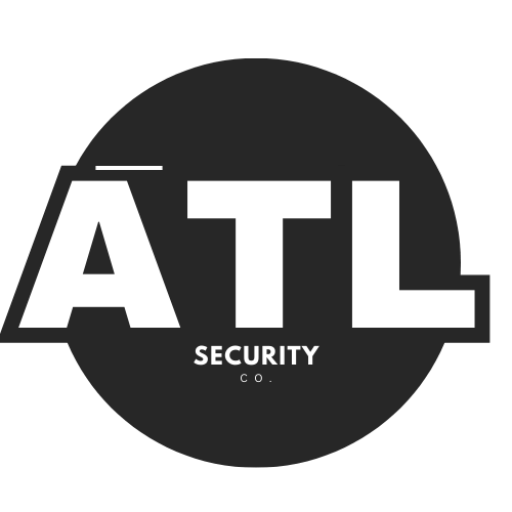In today’s digital age, securing your Wi-Fi network is more crucial than ever. With the increasing number of devices connected to the internet, a weak Wi-Fi network can lead to serious security risks. Hackers often target unsecured networks to gain access to personal information, such as passwords, bank details, and private communications.
By not securing your Wi-Fi, you are essentially leaving the door wide open for cybercriminals to invade your privacy. Moreover, an unsecured network can also lead to unauthorized usage. Neighbors or strangers might connect to your Wi-Fi without your permission, slowing down your internet speed and consuming your bandwidth.
This can result in additional costs if you have a data cap with your internet service provider.
Therefore, understanding the importance of securing your Wi-Fi network is the first step toward protecting your personal information and ensuring a smooth online experience.
Key Takeaways
- Securing your Wi-Fi network is crucial to protect your personal and sensitive information from unauthorized access.
- Setting up a strong and unique Wi-Fi password is the first line of defense against potential hackers and intruders.
- Enabling network encryption adds an extra layer of security by encoding the data transmitted over your network.
- Regularly updating your router’s firmware is essential to fix security vulnerabilities and ensure optimal performance.
- Disabling remote management helps prevent unauthorized access to your router’s settings and configuration.
Setting up a Strong and Unique Wi-Fi Password
One of the simplest yet most effective ways to secure your Wi-Fi network is by setting up a strong and unique password. A good password should be at least 12 characters long and include a mix of uppercase letters, lowercase letters, numbers, and special symbols. Avoid using easily guessable information like birthdays or common words.
Instead, consider using a passphrase—a series of random words strung together—that is both memorable and difficult for others to guess. Changing the default password that comes with your router is essential. Many people overlook this step, thinking that their network is safe just because they have a password.
However, default passwords are often easy for hackers to find online.
By creating a unique password, you significantly reduce the risk of unauthorized access to your network.
Remember to update your password regularly to maintain security.
Enabling Network Encryption

Enabling network encryption is another vital step in securing your Wi-Fi network. Encryption scrambles the data transmitted over your network, making it unreadable to anyone who might intercept it. The most common types of encryption are WEP, WPA, and WPA2, with WPA2 being the most secure option available for home networks.
When setting up your router, make sure to select WPA2 as the encryption method. Using encryption not only protects your data but also adds an extra layer of security against potential intruders. Even if someone manages to connect to your network, they will find it challenging to access any sensitive information without the proper encryption key.
Always ensure that encryption is enabled on your router settings to keep your network safe from prying eyes.
Updating Your Router’s Firmware Regularly
Just like any other device, routers require regular updates to function optimally and securely. Router manufacturers frequently release firmware updates that fix vulnerabilities and improve performance. Failing to update your router can leave it exposed to security threats that hackers can exploit.
To keep your router secure, check for firmware updates regularly. Most routers have an option in their settings menu that allows you to check for updates easily. If an update is available, follow the instructions provided by the manufacturer to install it.
By keeping your router’s firmware up-to-date, you ensure that you are protected against the latest security threats.
Disabling Remote Management
Remote management allows users to access their router settings from outside their home network. While this feature can be convenient, it also poses significant security risks. If remote management is enabled, hackers could potentially gain access to your router from anywhere in the world, making it easier for them to compromise your network.
To enhance security, it’s advisable to disable remote management unless you absolutely need it. This simple step can significantly reduce the risk of unauthorized access to your router settings. If you do need remote access for any reason, consider using a secure method such as a VPN or ensuring that strong authentication measures are in place.
Implementing MAC Address Filtering

MAC address filtering is a security feature that allows you to control which devices can connect to your Wi-Fi network based on their unique MAC addresses. Every device has a specific MAC address that acts like a fingerprint, making it easy to identify. By enabling MAC address filtering on your router, you can create a list of approved devices that are allowed to connect.
While this method adds an extra layer of security, it’s important to note that it should not be the only measure you rely on. Determined hackers can spoof MAC addresses, so it’s best used in conjunction with other security practices like strong passwords and encryption. However, implementing MAC address filtering can help you keep track of which devices are connected to your network and prevent unauthorized access.
Using a Virtual Private Network (VPN) for Added Security
A Virtual Private Network (VPN) is an excellent tool for enhancing your online security and privacy. When you use a VPN, your internet traffic is encrypted and routed through a secure server before reaching its destination. This means that even if someone intercepts your data, they won’t be able to read it without the proper decryption key.
Using a VPN is especially beneficial when connecting to public Wi-Fi networks, which are often less secure than private ones. By encrypting your connection, a VPN protects sensitive information like passwords and credit card numbers from potential hackers lurking on public networks. Additionally, a VPN can help you maintain privacy by masking your IP address, making it harder for websites and advertisers to track your online activities.
Monitoring Your Network for Suspicious Activity
Finally, regularly monitoring your network for suspicious activity is essential for maintaining security. Many routers come with built-in tools that allow you to see which devices are connected to your network at any given time. Take advantage of these features to ensure that only authorized devices are connected.
If you notice any unfamiliar devices on your network, take immediate action by changing your Wi-Fi password and reviewing your security settings. Additionally, consider using network monitoring software that can alert you to unusual activity or potential threats. By staying vigilant and proactive about monitoring your network, you can better protect yourself from cyber threats and ensure a safer online experience.
In conclusion, securing your Wi-Fi network is not just about convenience; it’s about protecting yourself from potential threats in an increasingly connected world. By following these steps—setting strong passwords, enabling encryption, updating firmware regularly, disabling remote management, implementing MAC address filtering, using a VPN, and monitoring for suspicious activity—you can create a robust defense against cybercriminals and enjoy peace of mind while browsing the internet.
FAQs
What is a Wi-Fi network?
A Wi-Fi network is a wireless network that allows devices to connect to the internet and communicate with each other using radio waves.
Why is it important to secure your Wi-Fi network?
Securing your Wi-Fi network is important to prevent unauthorized access to your internet connection and to protect your personal and sensitive information from being intercepted or compromised.
What are the potential risks of an unsecured Wi-Fi network?
An unsecured Wi-Fi network can be vulnerable to unauthorized access, data interception, and cyber attacks. This can lead to identity theft, financial loss, and privacy breaches.
How can I secure my Wi-Fi network?
To secure your Wi-Fi network, you can use strong and unique passwords, enable encryption (such as WPA2), hide your network’s SSID, and use a firewall to protect your network from unauthorized access.
What are some common mistakes to avoid when securing a Wi-Fi network?
Common mistakes to avoid when securing a Wi-Fi network include using default passwords, not updating firmware, and not regularly monitoring network activity for suspicious behavior.
What are the benefits of securing a Wi-Fi network?
Securing your Wi-Fi network can provide peace of mind, protect your personal and financial information, and prevent unauthorized access to your internet connection and devices.





